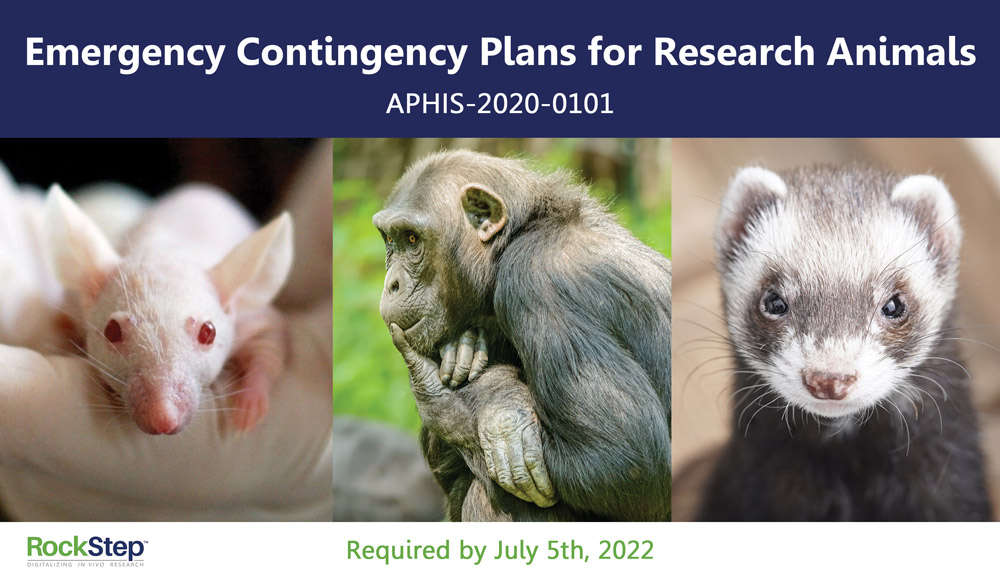
A blog article by Ashlie Reker, Ph.D.
Now into our third year of the COVID-19 pandemic, we can all safely say that we are familiar with the impacts that such unforeseen disasters have on nearly every aspect of our lives. However, one consequence not often considered in emergency situations is the health and safety of laboratory animals.
As it was unclear how long lockdowns and social distancing would be in place, research labs all over the world were essentially forced to carry out mass culls. I vividly recall lining up next to my colleagues, the despondence evident on our faces at being appointed with such a callous task.
Thankfully, the ramifications of events such as these can be lessened with actionable plans that can mitigate animal suffering and loss, and consequently, the loss or disruption of critical research.
As a result of Hurricane Katrina, The United States Department of Agriculture-Animal and Plant Health Inspection Services (USDA-APHIS) began the process of requiring contingency plans for research facilities. Facilities will need to satisfy these requirements by July 5, 2022 to include:
- Identify emergency situations that arise as a result of geographic location
- Identify facility risks
- Outline tasks specific to the emergency situation that ensure animal welfare and establish a chain of custody to establish who will be responsible for these tasks
- Have a plan for response and recovery for materials, resources and training as required
Climb’s census functionality will document any discrepancies that occur as a result of the situation and allow staff and scientists to return to normal operations quickly. For animals needing care, Climb can assist in formulating treatment plans and documenting all relevant details that pertain to the animal’s welfare. RockStep Solutions recognizes the privilege and value of being able to conduct in vivo research and we look forward to supporting our customers in providing the highest quality of in vivo research management.
Learn more about the Contingency Plan Requirements:

RockStep’s in vivo management solution Climb helps in the event of an emergency to execute response and recovery plans.
Take the video tour or request a demo!




